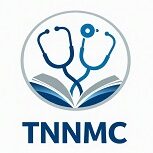In the United States, a stroke occurs every 40 seconds. The number of stroke victims is increasing among younger people, despite the fact that they are less likely to suffer a fatal outcome due to advances in medical care. According to Stanford Health Care, the vast majority of stroke victims are 65 years and older. However, 10 percent of stroke patients are younger than 45!
Is there a “typical” stroke victim?
When you think of strokes and the victims, you probably picture older adults. Stroke victims are likely to have other health problems, such as high cholesterol, high blood-pressure, and obesity. You probably don’t think of a stroke victim under 55 years old. You may not have thought that a dad who coaches his son’s Little League or a mother who is the head of the PTA for her children could suffer a stroke. According to several studies conducted in the U.S., as well as others in France and Norway, more and individuals under the age 55 experience strokes.
A high-risk stroke category is on the rise
It is often the death of a celebrity who alerts the public to an existing problem. Even if you do not follow celebrity gossip, it is likely that you have heard about the deaths of two stroke patients in the film industry. Luke Perry, an actor who suffered a massive ischemic stroke in early 2019 died at 52. John Singleton, the director of “Boyz N the Hood”, died less than two months after Perry at the age 51. Dr. Mitchell S.V. Elkind, chairperson of the American Stroke Association Advisory Committee , told CNN that strokes can affect middle aged and younger adults, and even children. Scientific American noted that the number of strokes among younger adults is increasing. In a 2017 study published in JAMA Neurology, researchers at the U.S. Centers for Disease Control and Prevention found that strokes among women aged between 18 and 34 years old increased by 32 percent. Males also experienced a 15 percent rise during this time period.
Why are these statistics so important?
You may wonder why it matters. The answer is very simple: the faster you or someone else responds to a stroke at the time, the better. The “golden window” is a three-hour period that begins when stroke symptoms first appear. It’s critical to recovery and survival. A person who has suffered a stroke should receive medical attention within the three-hour window. After this time, the stroke could have caused permanent damage. It is important that people understand that strokes can affect anyone at any age and are a serious risk.
What Are the Symptoms Of A Stroke
Everyone should be able to recognize stroke symptoms, as it is vital that stroke victims receive immediate help. Look out for these signs:
- Facial Droop –The stroke patient’s face can droop only on one side.
- Loss Of Speech –This sounds exactly like it. A stroke victim may lose the ability to speak completely or have a slur in their speech.
- Weakness or Numbness on One Side –A stroke patient may experience general weakness or numbness.
- Other symptoms –Less frequent symptoms include double vision and dizziness.
If you suspect that a friend, family member, or coworker is suffering from a stroke remember the acronym: F.A.S.T. This acronym stands for:
- F: Facial drooping
- A: arm weakness
- S: Speech difficulty
- T : Time for 9-1-1. Get help if you or someone else experiences these symptoms.
What you don’t know can hurt you
A study conducted by Ronald Reagan UCLA Medical Center found that people under 45 years of age underestimate the severity of stroke symptoms when they see them in others or themselves. Researchers found that 73 percent of respondents said they were more likely to wait out symptoms than seek help. This was because they didn’t know what they didn’t know.
The general public doesn’t understand that strokes can affect anyone at any age and that more and more young people are dying of them. This leads to a lack of action when a stroke occurs. George P. Teitelbaum M.D. is an interventional neuroradiologist and the director of Providence Saint John’s Health Center’s Stroke and Aneurysm Center. He says, “The first reaction is denial. But there’s nothing worse than that.”
What are the Treatments for Stroke Patients?
According to the American Stroke Association, 87 percent strokes are caused by a blood clot that forms in the body and cuts off the blood supply to certain parts of the brain. This type of stroke is called an ischemic or clot-forming stroke. This type of stroke is best treated by administering a clot dissolving medication called tissue plasminogen activater (tPA).
This medication can only be administered within the magical “golden” window, which shows how important an immediate response is in treating a stroke. Doctors often use the phrase “time, brain” to emphasize this point. The longer a person goes without treatment, then the more brain tissue will be damaged. In some cases, medical professionals may use a tiny catheter to dislodge or remove the clot instead of administering the medication.
The other type, which is less common, is called a hemorrhagic ischemic stroke. This type of stroke occurs when blood vessels burst within the brain. It requires surgery. Both types of stroke treatment are dependent on time.
Is Recovery Easier in Young People?
Yes, stroke recovery is faster and more likely in younger people, if there are no other major health problems. Many experts believe the higher plasticity of younger brains affects recovery rates. The brain tissue that is destroyed in a stroke never fully recovers, whether the victim is young or old. To compensate for the damaged circuits, other parts of the brain take over the functions that were previously performed by the affected area. This process is more effective in younger people. Because strokes are not often suspected in people under 55, many younger individuals do not receive the help they require because they don’t know they or someone they love is having a stoke. Even though younger people are often able to recover from a stoke, they may not recognize it until it is too late. Sir Francis Bacon said in 1597 that ” Knowledge is Power ” in stroke recognition.
Risk Factors for Stroke
The risk factors for stroke are the same in younger and older individuals. Stroke risk factors include
- High blood pressure
- The Diabetes
- Smoking
- Obesity
- Some genetic conditions such as sickle-cell anemia
It is more important than ever to recognize stroke symptoms in those younger than 55. It is crucial to seek medical attention during the “golden period” for a successful outcome and a full recovery. This vital information, that strokes are not just a condition for the elderly, must be widely known.
Is an Online Nursing Degree Program Right for You?
Push Expands for Nurses to Earn a Bachelor’s Degree – At Least
15 Highest Paying Nursing Jobs in 2024


